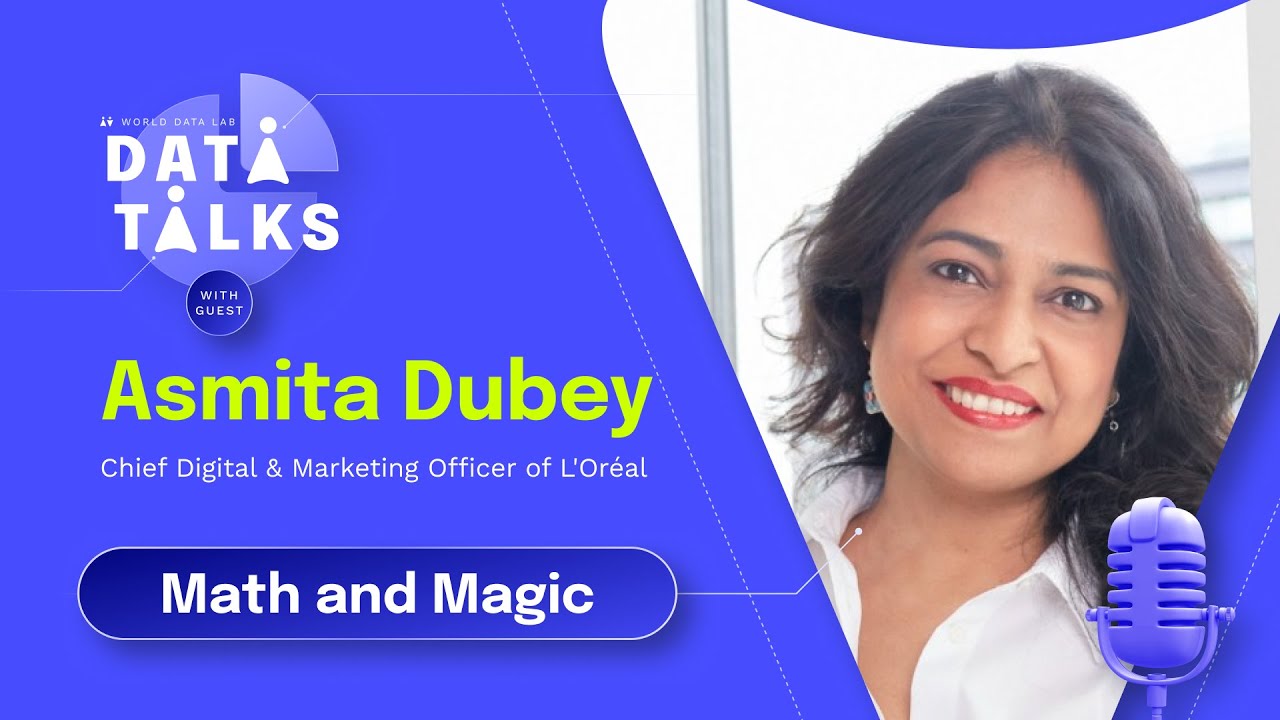
CEO Blog:10 years of World Data Lab
.jpg?width=64&height=64&name=unnamed%20(1).jpg)
We recently sat down with World Data Lab CEO Wolfgang Fengler to discuss the company's 10-year milestone, emerging trends in global data, and what's on the horizon.
What moments stand out as you reflect on World Data Lab's 10th anniversary?
It's been quite a journey. What began as a hobby and was presented at a 2014 TED talk evolved into an NGO where we realized the vision laid out by Homi Kharas, my co-founder, in the Sustainable Development Goals: developing a poverty clock, a hunger clock, and an emissions clock.
Then we realized that, almost as a byproduct of these data models, they're highly valuable for both private and public sector players. Some call it "data as a service" now. We became the global experts on the middle class, a segment people need to understand because the middle class spends 60% of everything.
If you understand developments in that space, you can make better decisions, help poorer people access goods and services, reduce waste by producing according to population needs, and gain a much more forward-looking perspective. That's World Data Lab's USP: we look into the future.
Big moments? Clearly, when we launched these major initiatives: the TED talk, the poverty clock, and later our core platform, which we now call World Data Pro, soon to be World Data Intelligence. One partner that's been with us for eight years is L'Oréal. As Asmita Dubey mentioned in our podcast, we've partnered to strengthen L'Oréal's analytical function.
Another key moment was when venture capital joined WDL and helped us further professionalize and upgrade our operations. Then there are our partnerships with big technology companies that are now taking shape. Our partnership with Mastercard and Mastercard Foundation is another major one. This multi-million dollar partnership gives us a foothold in Africa. And obviously, when our global team comes together to celebrate these successes, those are big milestones.
Ten years in, what's one thing you want World Data Lab to be known for a decade from now?
We want to be the authority on forward-looking data, especially economic and consumer data. What people consume is what shapes their lives. If they consume very little, they're poor. If they're in the middle class, people have choices on how they spend their money.
There's still so much confusion out there. People think that in some parts of the world, the middle class is shrinking. Broadly, that's actually not true. People often struggle to understand how generations connect: is Gen Z really driving spending, or is it Gen X?
These are all illustrations of why World Data Lab stands for good data. It's like the car industry: if you buy a BMW, you know you get a good car. When you look at World Data Lab, you know you get good data.
The second part is democratizing data. Data isn't for experts only. We have super high-powered, AI-enriched data that experts can use, but it needs to be simplified so everyone can relate to it and trust it. Instead of feeling like a black box that experts cook up in secret, data should be accessible to everyone.
Are you seeing any new trend lines emerge in the second half of 2025 that weren't on your radar six months ago?
I'm focusing a lot on Southeast Asia now because of the ASEAN Global Inclusive Growth Summit. An interesting insight: Southeast Asia serves as a mirror of Asia in general, or the Asia Pacific. And the Asia Pacific is a mirror of the world.
We announced that the world has reached middle-class dominance, meaning more than 50% of the world is now in the middle class. ASEAN is also 56% middle class, and I APAC is 52%. There's almost a symmetry there. With all this diversity of poor and rich countries, if you take ASEAN as a single economy, ASEAN will actually overtake China in terms of middle-class growth in 2031, because China will have maxed out at some point. That's why this region becomes even more important.
The second trend is the growth of the sports sector, especially in sports services. It's logical: people have more money, they want experiences, and sports experiences are part of that. By 2031, we're projecting it'll be a trillion-dollar industry.
The final thing connects to the interesting paradox of so-called loneliness in some parts of the world. There's loneliness, especially among older people and some younger people, and students, depending on their circumstances. We often think of our grandparents living alone. But if you check the global numbers, actually, only 4% of the world lives alone. That was a stunning number.
It makes sense because it's a bit of a Western perspective. In poorer countries, there's very little loneliness because people are almost forced to live together. That has pluses and minuses—you don't always have privacy, and unfortunately, people still die quite early in these setups. But these were recent insights from our work that weren't on my radar.
You recently presented at the Champions and Friends Club Day. What made that conversation distinctive?
Big shout-out to Chris Hörmann, who superbly organized this with about 45 really impressive people from all walks of life. It was spectacular—people who are quite famous in the German sports setting, alongside people from business and emerging sports like Hyrox.
We had both sides of the conversation. One was understanding how the sports industry develops and how athletes think about their second careers. In most cases, at age 35, you end your career and start a new one, and for some, it's not straightforward because that intensity and those successes are very hard to repeat.
At the same time, I was able to give the business perspective on how the industry is developing. I made it interactive with a little quiz on basic questions about the world. As always, people got it wrong, but I was generous and gave the best performer Homi's book on the global middle class.
Are there any other significant developments on the partnership or commercial front you'd like to highlight?
WDL is going strong on technology partnerships with many big companies, including engagements with some based in Silicon Valley and mobility companies like Uber and inDrive. These are exciting breakthroughs. Today I'm meeting with Spotify, where we also have an ongoing partnership. These are exciting partners because they're growing fast and need our data to grow even better and faster.
The other big partnership is with NielsenIQ. NielsenIQ is the number one consumer insights company in the world, and I'm here presenting our report on Gen X at the National Association of Convenience Stores (NACS).
Since you asked about insights: I'm Gen X myself. The interesting thing is that our generation—the so-called forgotten generation—is actually the one with the most money right now. It's a tight race with millennials, but we are the most financially important generation at $15 trillion, projected to increase to $20 trillion in the next few years.
That's what we'll outline, and there are implications for brands—how they market, how they're positioned. But as always, it's not a simple story. It's not everywhere. Some countries are not Gen X countries, some are becoming Gen X countries, and some are still baby boomer countries.
Looking ahead, what should we keep our eyes on?
World Data Intelligence is coming soon. Our team has worked incredibly hard to develop a new version of our core product. Obviously, our main product is data, but data needs to be made accessible. Our data infrastructure and systems have become so large that we need to make it easier to consistently add new data.
Think of just the way people spend money. They spend on personal care, which includes beauty and cosmetics. Cosmetics include skincare, which can be divided into premium and non-premium categories, and finally sunscreen and face cream. You can go into even more detail, but every extra detail, every branch of the tree, multiplies our data because we break it down by age, gender, country, and income levels. We then break down countries into states, counties, and cities. It becomes a massive data monster with a certain logic.
World Data Intelligence will enable users to quickly find the right numbers and categories. It's LLM-enabled, and in terms of design, it's the next level of upgrade. It has two big advantages: it allows us to onboard and integrate more data onto our platform, and makes it easier to segment data for different clients. Some need beauty data, others need streaming data, and others need mobility data.
Stay tuned. We'll launch it soon and possibly present it at the next World Consumer Outlook as well. You'll get a nice sense of what we have in store.


